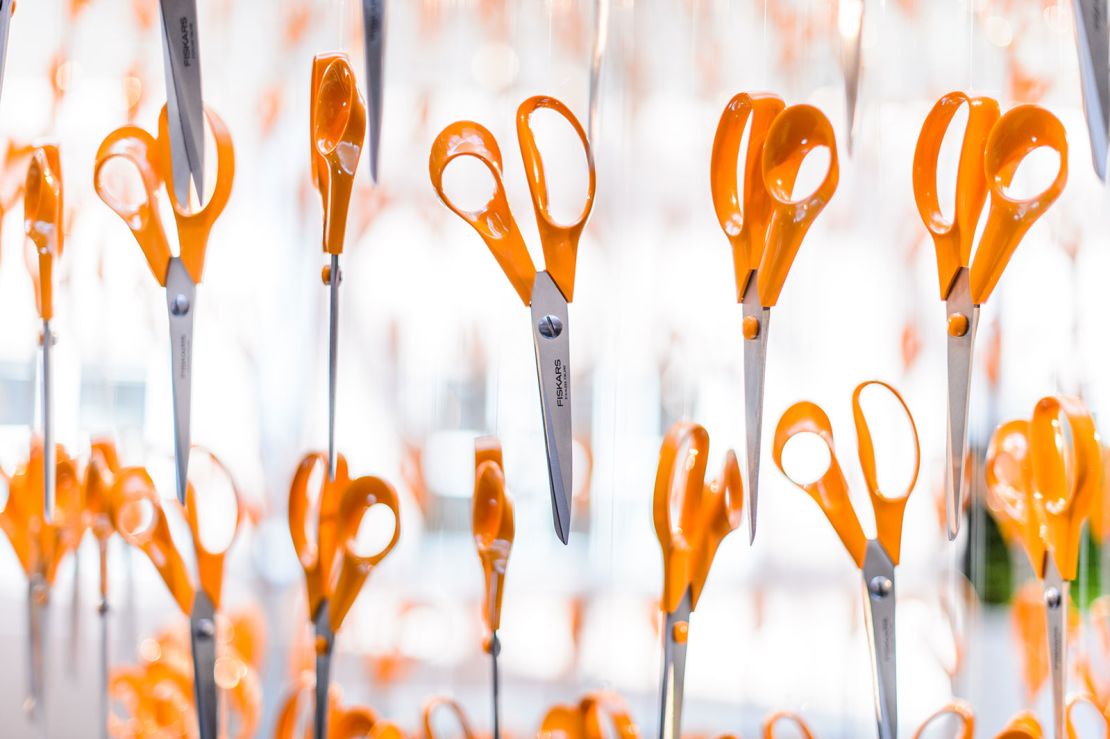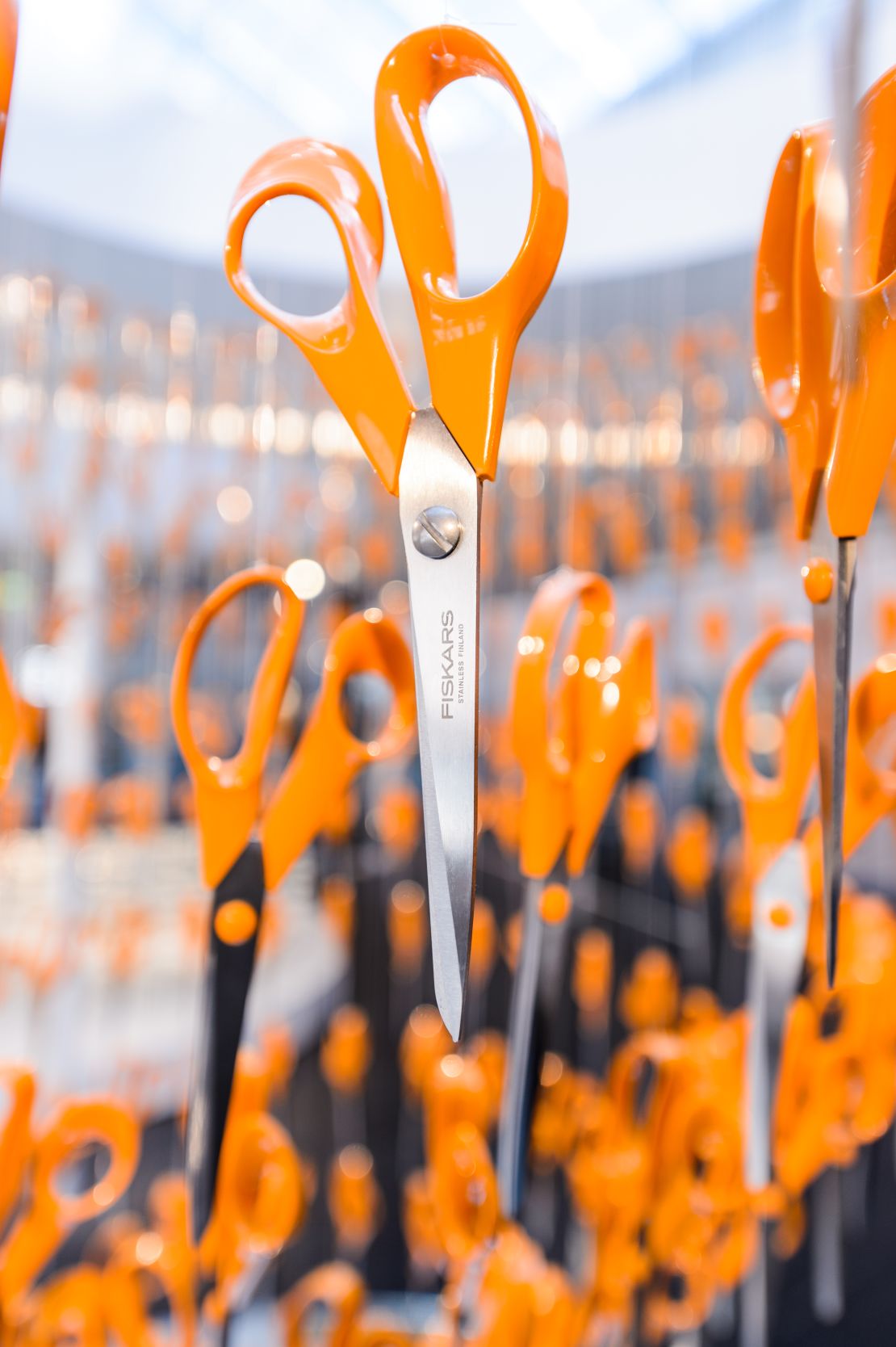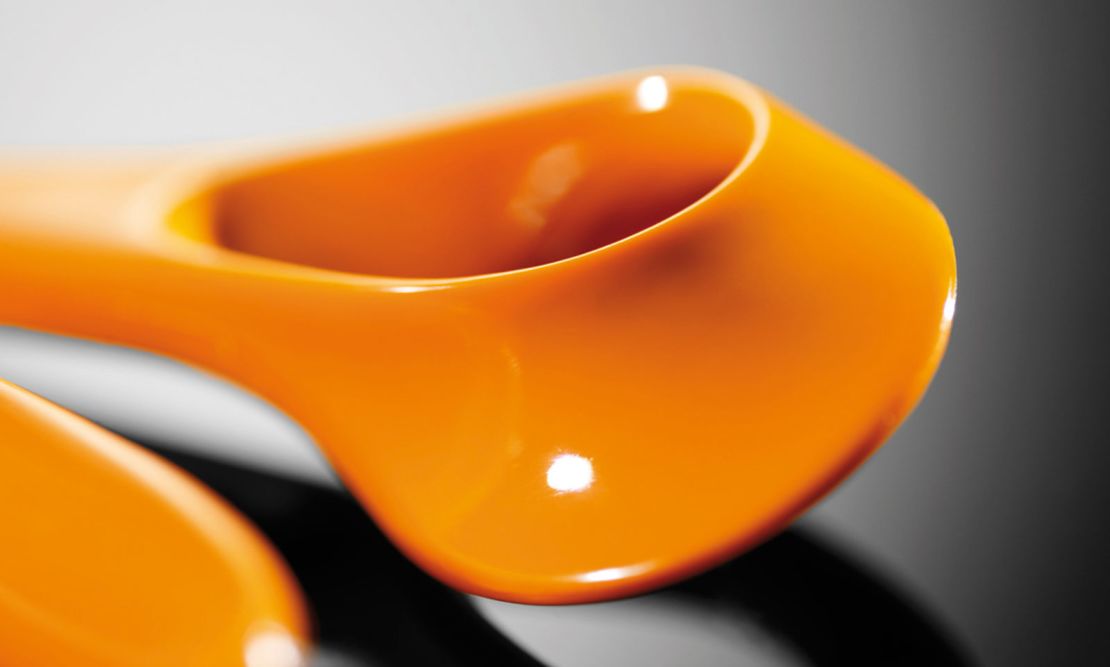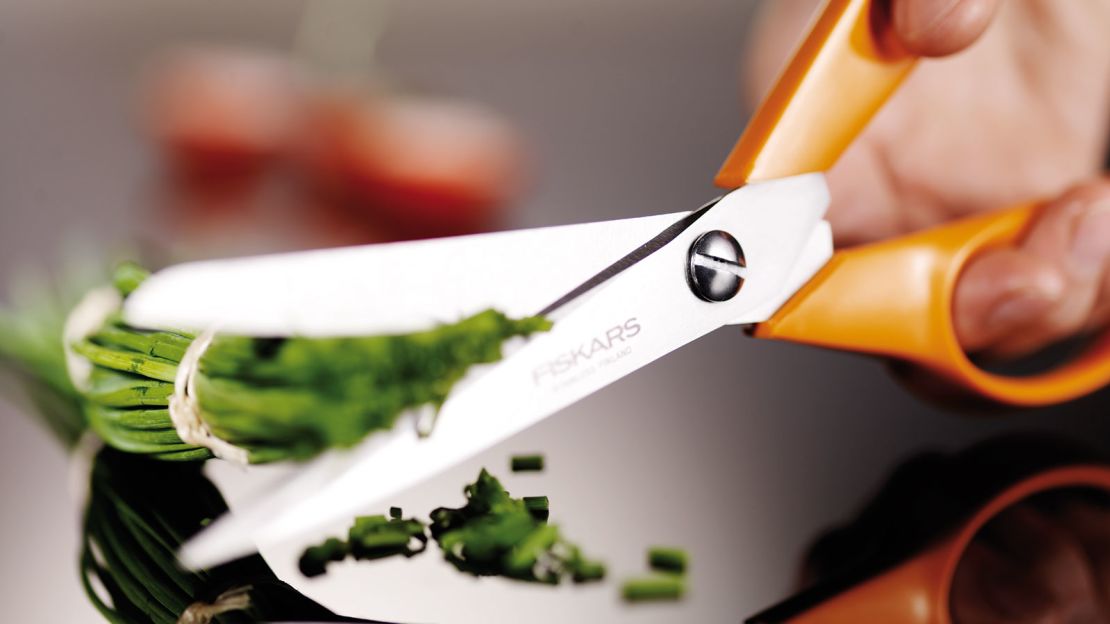You probably recognize designer Olof Bäckström’s classic orange-handled scissors. The company that makes them, Fiskars, claims to have sold over a billion worldwide, so there’s a good chance you have a pair at home.
But you may not know this: in Bäckström’s homeland of Finland, the scissors are so iconic that their 50th birthday is being celebrated with a special exhibition at the Helsinki Design Museum.

These simple household tools have become a source of national pride in a country that takes design seriously, according to Pekka Korvenmaa, a professor of design and culture at Finland’s Aalto University.
“They’re the most widely-spread Finnish design product,” said Korvenmaa in a phone interview.
“In Finland, when we say ‘scissors’ we mean Fiskars. There are no other scissors – more or less – so it’s taken for granted.”
Game-changing design
Everyday users may give little thought to the design of scissors, but Korvenmaa heralds it as ground-breaking: “Its success comes from the ergonomic performance – the shape and grip of the handle. You take the scissors into your hand and feel the fit,” he said.
However, the real game-changer wasn’t the shape but the materials. Most of the scissors available in 1967 – when Bäckström made his design breakthrough – were the heavy iron variety used by tailors.

“Tailors’ scissors were horrendously expensive, so Fiskars took the shape and cast it in a cheap material – plastic,” said Korvenmaa.
“Rather than being forged from iron, the blades were made from pressed steel which was held together by a single piece of metal in the middle. The whole production process became quite simple and inexpensive.”
Although Fiskars calls the design an “amazing leap in cutting performance,” its success was as much a matter of affordability.

“Scissors became much more accessible,” explained on the phone Marika Orkamo, Fiskars’ Vice President of branding and marketing.
“Not every household had them, even in the 1960s. But eventually they became part of the mass market.”
A happy accident
Fiskars has flirted with different colors over the years. Red handles, for instance, are used to differentiate left-handed models.

But the company’s brand remains tied to the distinctive orange of its best-selling product – ‘Fiskars Orange’ even became a registered trademark in Finland in 2003.
The choice of this particular hue, however, came about by accident, according to Orkamo.
“When the first samples were being produced, there were supposed to be three options – black, green and red,” she said. “But the guy who mixed the plastic had just made an orange-colored juicer, and he had some leftovers in the machine.
“He wanted to use orange first so that they didn’t waste any plastic. When [Fiskars’ employees] were presented with the four final choices, they had a vote, and orange beat black by nine votes to seven.”
While the original color stuck, changes have been made to the design first proposed by Bäckström, who died in 1998 aged 75. The cutting angle has been altered to improve performance, and a more durable plastic has been in use since the 1980s.
Not just for the home
Next month, the Design Museum Helsinki will host an exhibition of work by artists and designers who use – or are inspired by – the simple orange scissors.
“It’s such an everyday object that we were worried it could be quite boring,” said Orkamo, who curated the exhibition. “But then we started thinking about the different ways the scissors are used, and all the industries that use them.”
The result is a varied collection of contributions from fashion designers, paper-cutters and food artists. The exhibition also features a playlist by a Finnish musician who goes by the name “DJ Fiskars.”
Some of the participants play explicitly on the scissors’ color and design. But others, like artist and designer Martin Bergström, simply used them as a tool. Hailing from Sweden, Bergström will present two pieces: a long flowing dress and collages made from dried flowers.

“I’ve had these scissors around since I was a child,” he said on the phone. “I’ve used them in my work for a long, long time.
“Fiskars’ scissors are very well-known in Sweden too – but I don’t think everyone knows they’re Finnish. Most people probably think they’re from Sweden!”
‘Our Scissors’ is on at Design Museum Helsinki from 7 September to 29 October 2017









